Rapid Impact Compaction & Rapid Vibro Compaction
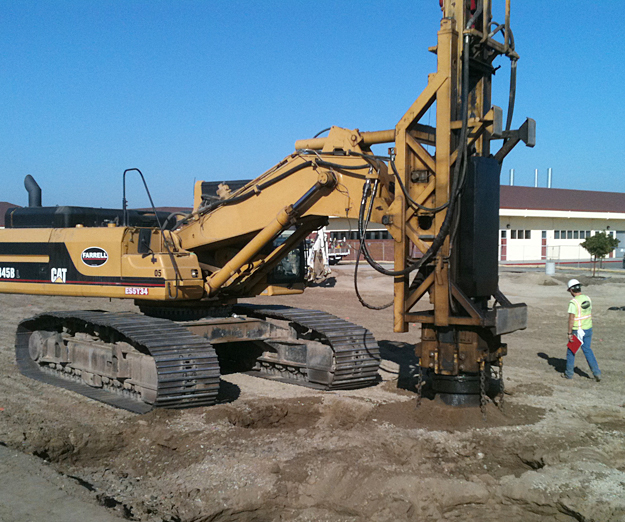
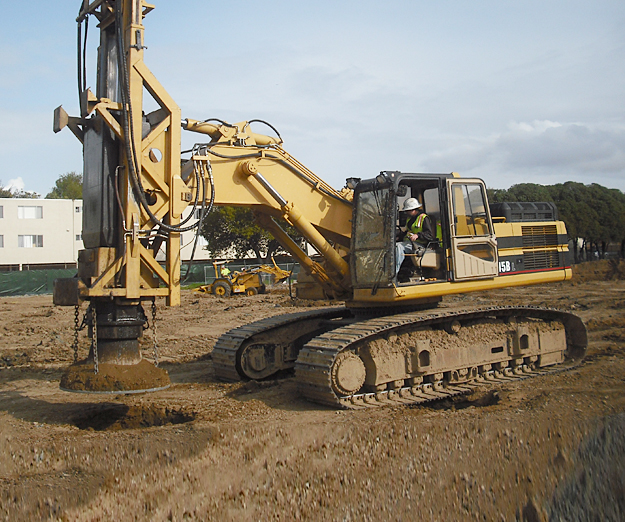
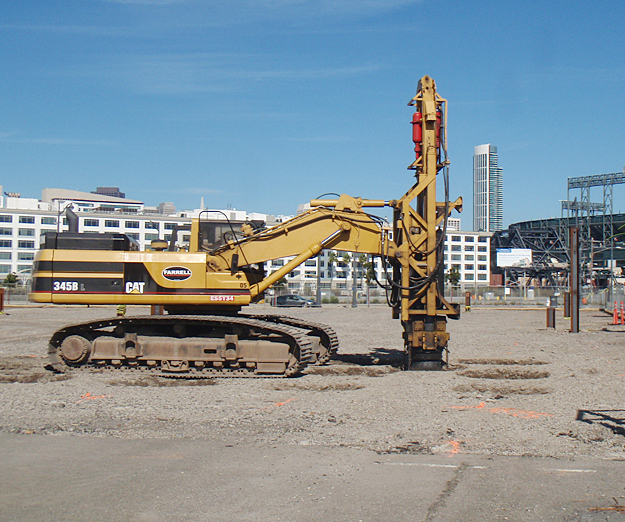
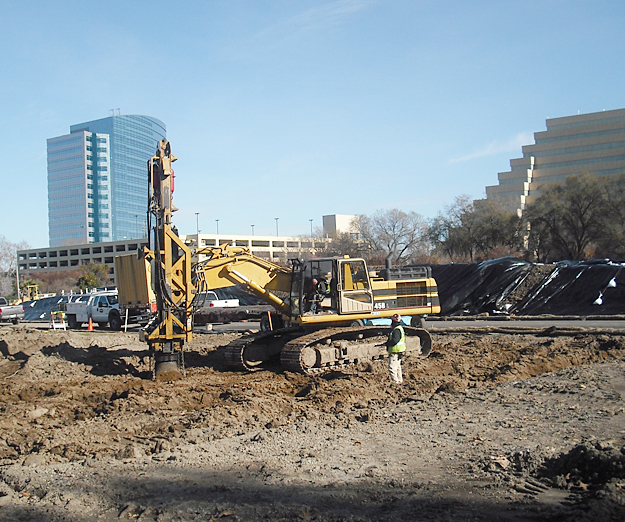
Overview
Rapid Impact Compaction and Rapid Vibro Compaction (RIC and RVC) are mobile carrier, dynamic densification and vibratory compaction, ground improvement methods. Vibrations are the norm for these systems. RIC/RVC compact, densify, and improve shallow to deep loose soil and fill resulting in strong, “composite ground” for the support of foundations and for liquefaction mitigation. RIC uses “controlled impact compaction” at the surface by hammering dynamic compaction forces into the ground. RVC uses high frequency, vibratory compaction based on the principles of resonant compaction to densely pack soil in the ground. RIC/RVC compaction points are spaced regularly over the site or directly under foundations. RIC/RVC installs composite ground that exhibits increase in density, high shear strength, and improved stiffness. RIC/RVC are fast, dynamic energy, and cost effective ground improvement systems resulting in composite ground that is the same or better than engineered fill.
RIC/RVC Applications
Ground densification, liquefaction mitigation, increase pile lateral capacity, and support foundations and mats. Ideal applications for RIC/RVC:
- Loose sand soil sites where silt and clay contents are low.
- Hydraulic fill and debris fill sites.
- Contaminated soil and debris fill sites.
- Quick and Rapid schedule. It’s fast.
- Sites where excavation may be 5 to 20-feet to re-engineer the fill.
- Sites where noise and vibration are tolerable and OK.
4-Step Construction Process
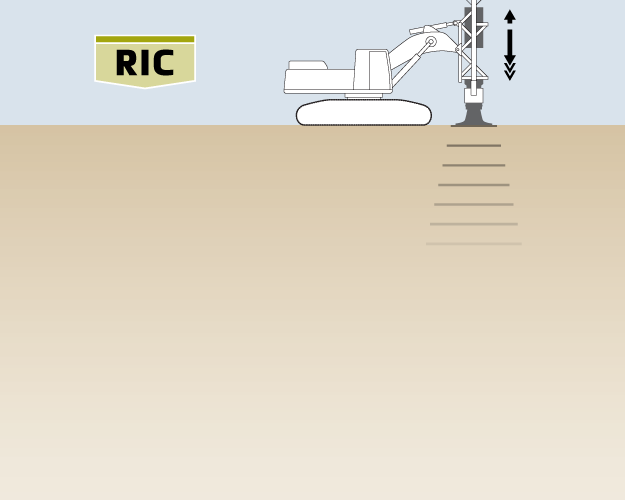
Line up compaction foot and start RIC hammering.
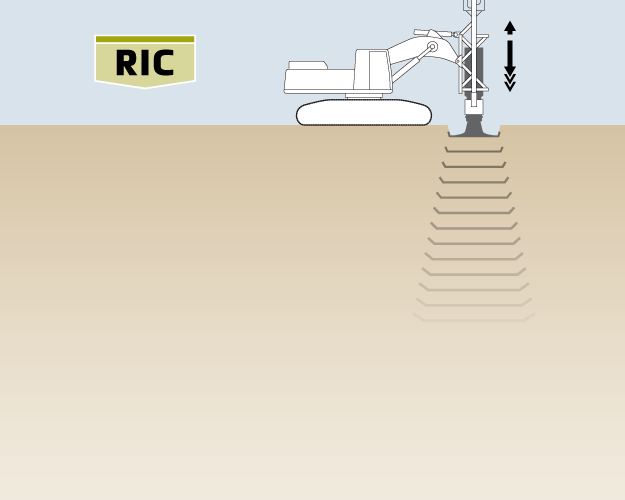
RIC hammering stops at high deflection, high blows, or manual stop by operator.
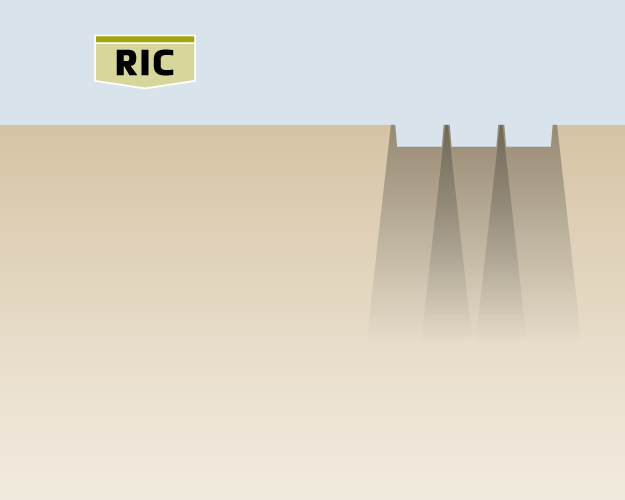
Perform multiple compaction points to finish 1st pass.
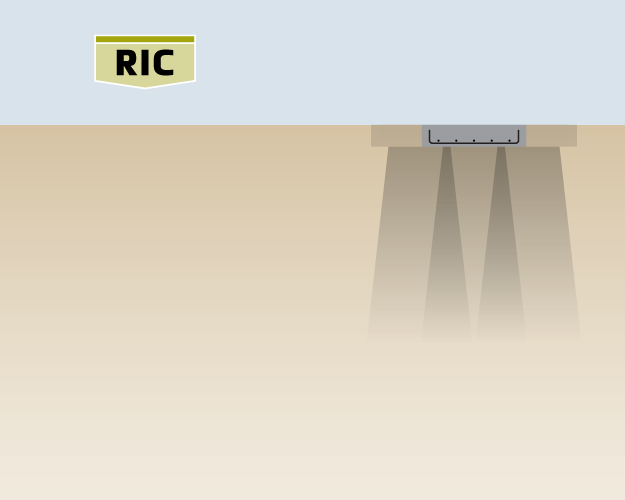
Finished RIC ground improvement with footing or slab above.
Technical Details
Rapid Impact Compaction and Rapid Vibro Compaction (RIC and RVC) provide excellent compaction and ground densification for loose soil horizons within the upper 10 to 40 feet of the ground surface. RIC/RVC make the ground stiff in a quick time frame. The ability to cover several 1000 square feet per day, make these systems perfect for a job with a short schedule. RIC/RVC use dynamic/vibro energy to produce strong “composite ground” for wide spread areas. RIC is shallow compaction and RVC is shallow to deep compaction. Vibrations must be tolerable at adjacent and nearby sites.
RIC employs a CAT 345 mobile carrier that allows for quick movement from compaction point to compaction point. RIC uses a hydraulic hammer with a 7.5 ton weight that drops 3 feet onto a 5 foot diameter Hammer foot. Each impact blow delivers about 45,000 ft-lbs of dynamic energy. The process is quite fast, as the hammer hits the ground at roughly 40 to 60 blows per minute. RIC produces energy and force to compact and increase the density of soil to depths of 10 to 20 feet and down 25 feet with clean sand conditions.
RVC employs a vibrator and the resonant compaction attachment. The vibrator power ranges between 50 to 150 tons centrifugal force. Each RVC “composite ground” cell ranges between 16 to 50 square feet depending on soil conditions and can extend from 10 to 50 feet into the ground. Resonant compaction relies on high vibration frequency (30 to 35 hz) to penetrate depth and then uses lower frequency (15 to 25 hz) to compact soil zones for higher density.
Import materials include sand, gravel, grout, and soil-cement mixes to fill RIC/RVC compaction points. Cone penetration tests confirm density of the composite ground between
RIC/RVC compaction points. RIC/RVC are fast, dynamic and vibro compaction, ground improvement that support your project to Go Vertical with Confidence®!
Testimonial

Mission Bay Block 2 & 3
San Francisco, CA
“Because you are a licensed geotechnical engineer, I can always count on your honest feedback and discussion regarding foundation solutions. With Farrell, we get a well-engineered solution that is reliable, appropriate, and will ultimately save our client time and money.”
Frank L. Rollo
Principal Engineer
Langan Treadwell & Rollo
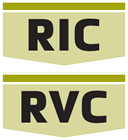
Rapid Impact Compaction & Rapid Vibro Compaction
Geologic Hazard Application

Soft/Loose Soil

Liquefaction

Contaminated Soil

Lateral Spread

Slope Stability
Diameter/Depth
- 5 – 8 ft dia
- 6 – 48 ft deep
Compatible Soils
- Sand (SP, SM, SC)
- Sand – Gravel mixtures
- Silt (ML, MH)
- Undocumented Fill
- Contaminated Soil
Bearing Capacity Range
2,000 – 8,000 psf
Key Advantages
- Highly cost effective
- Liquefaction mitigation
- Densification
- Use for confinement
- Fast install process
- No spoil
Key Considerations
- Vibrations at 30 ft
- Pad grading
- Import needed
- Shallow depth – RIC
- High noise – RIC
Comparable To
- Deep dynamic compaction
- Overex/replace
- Geopier®
- Resonant compaction

